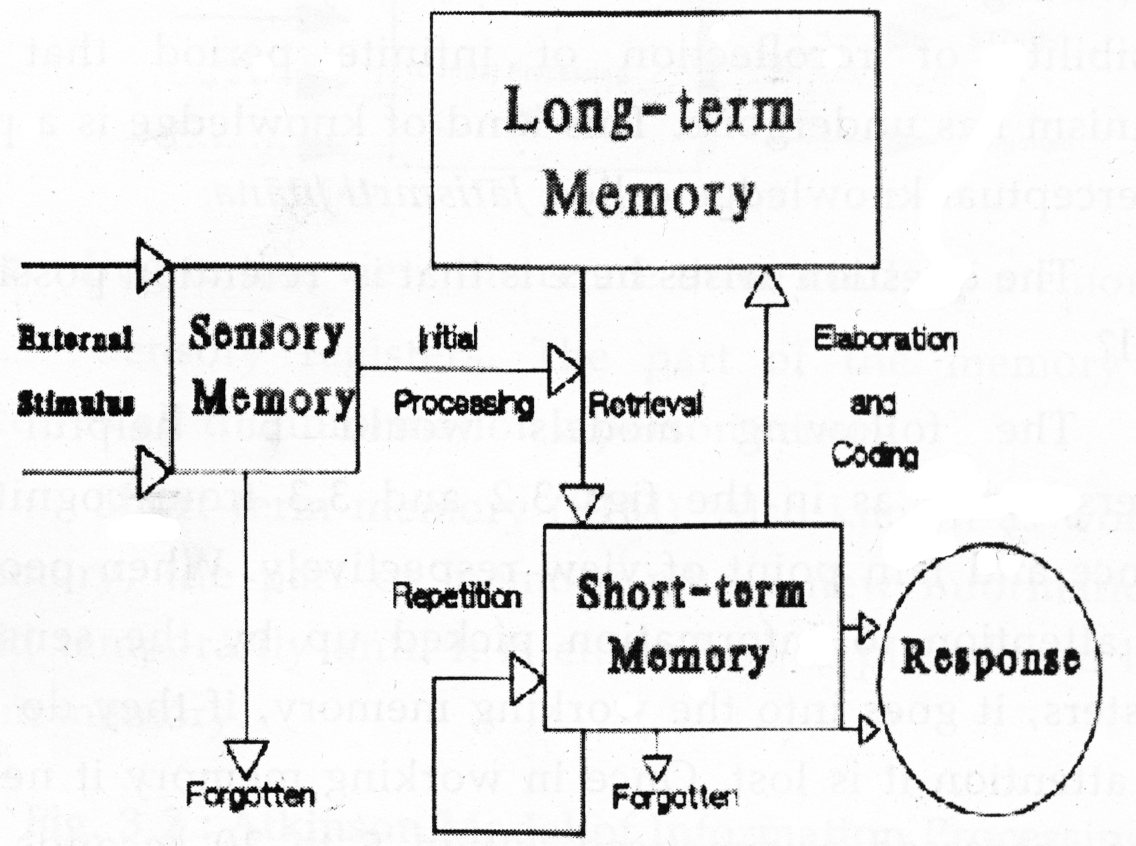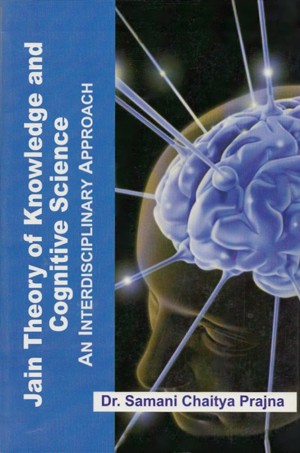3.1 Information Processing in Jainism
Fig. No. 3.3 Edwards Model of Information Processing

Thus, Information processing refers to the way we handle the information. From the information processing viewpoint/people are active learners who can control and manipulate information and devise strategies to deal with particular situations, for example, thinking aloud when completing a complex task. The information processing approach has continued to gain strength with an increasing amount of research related to the senses, encoding, memory, retrieval, problem solving, meta-cognition, perception, language, attention and so on as -evidenced by the large number of recent publications in this field.
During the last two decades, information processing theories have been used widely to explain or provide a major perspective on human learning. The information processing perspective is linked with the development of computers and improved knowledge of the functions and processes of the nervous system. Computers provide an avenue for research on human capabilities and learning processes because they stimulate a number of complex human functions and specifically because information is involved.
Over the last fifteen years, cognitive science in general, and in particular the information processing model has become dominant partly because of the insights the model gives us in describing and explaining cognitive (mental) processes, such as thinking and problem solving. These are of course what teachers and trainers are very much interested in. Effective use of these cognitive processes depends on our understanding or the information processing model.[5]
Cognition refers to the inner processes and products of the mind that lead to "knowing". It includes all mental activity-remembering, symbolizing, categorising and even [6] dreaming. Thus cognition is the result of cognition. Jainism fully agrees with it and it includes all the formerly activities of brain under a category of cognition called Perceptual cognition (mati jñāna).
Perceptual cognition (mati jñāna) is the kind of cognition that process information acquired through senses and mind. This cognition (Mati jñāna) is more commonly called as ābhinibodhika jñāna[7] in agamic literature,[8] defined in as 'abhinibujjhaitti ābhiṇibo- hiyāṇaṁ' to get to know about object is ābhinibodhika jñāna,[9] " The Vṛtti of Nandi[10] however defines it in detail as:
tadāvaraṇa kṣayopśamaḥ /
tena nivṛittamabhinibodhikaṁ /
iṁdrya mano nimitta yogyadeśāvasthita vastu
Viṣayaḥ sphuṭapratibhāso bodha viśeṣaḥ.//The cognition which occurs through senses and mind and cognises clearly the object placed at a proper distance is known as perceptual cognition." The first among the five types of cognition is perceptual cognition. It has been defined in 'Jain Siddhānta Dīpīkā'[11] as - The knowledge acquired through senses and mind is perceptual knowledge. The word ābhinibodhika too has been. used for perceptual knowledge in Jain' scriptures.[12] Perceptual knowledge is further classified as follows:
- Cognition without the help of both mind and senses,
- Cognition due to the activity of the senses alone
- Cognition due to the activity of the mind alone, and
- Cognition due to the joint activity of the mind and the sense.[13]
The process of perceptual cognition or Information Processing received through senses and mind is as follows:
 Samani Chaitya Pragya
Samani Chaitya Pragya

